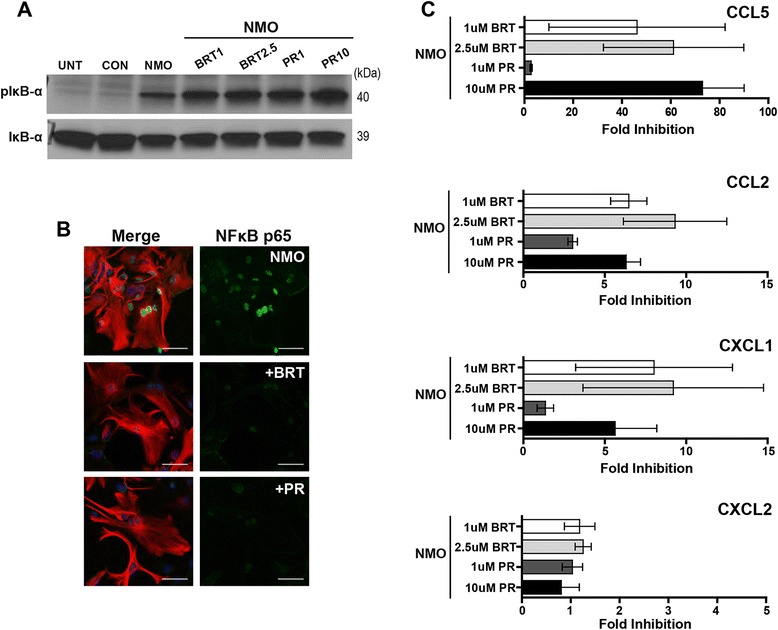Fig. 5.

The proteasome inhibitor bortezomib and the immunoproteasome inhibitor PR-957 effectively inhibit NFκB-dependent pro-granulocytic responses induced by NMO IgG. a Lysates (30 μg per lane) from unstimulated cells (UNT), following stimulation for 60 min with 100 μg/mL CON IgG (CON) or NMO IgG (NMO), or following stimulation with NMO IgG after pretreatment with bortezomib (BRT 1 μM or 2.5 μM) or PR-957 (PR 1 μM or 10 μM) were probed by immunoblot with antibodies for either pIκB-α or IκB-α. As expected, pIκB-α accumulated in BRT- or PR-treated cells due to impaired proteasome and immunoproteasome function. Blot is representative of 2 independent experiments. b Nuclear translocation of NFκB p65 (green) in GFAP-labeled cells (red) was assessed after stimulation for 60 min with 100 μg/mL NMO IgG alone or following 60-min stimulation with NMO IgG after pretreatment for 2 h with either bortezomib (BRT; 1 μM) or PR-957 (PR; 1 μM). Scale bar: 50 μM. p65 translocation was robustly blocked by both inhibitors. Panel is representative of 2 independent experiments performed in duplicate. c The fold inhibition of CCL5, CCL2, CXCL1, and CXCL2 release induced after stimulation of cells for 24 h with 100 μg/mL of NMO IgG in the presence of BRT (1 μM or 2.5 μM) or PR (1 μM or 10 μM) was assessed by ELISA. Both BRT and PR were effective inhibitors of CCL5, CCL2, and CXCL1 responses with little inhibition of CXCL2, as previously observed for MG132. Fold inhibition was calculated as in Fig. 4. Findings are representative of two separate experiments performed in triplicate. Error bars show the 95 % confidence interval. p < 0.001 from two-way ANOVA comparing chemokines and inhibitors used for treatment
